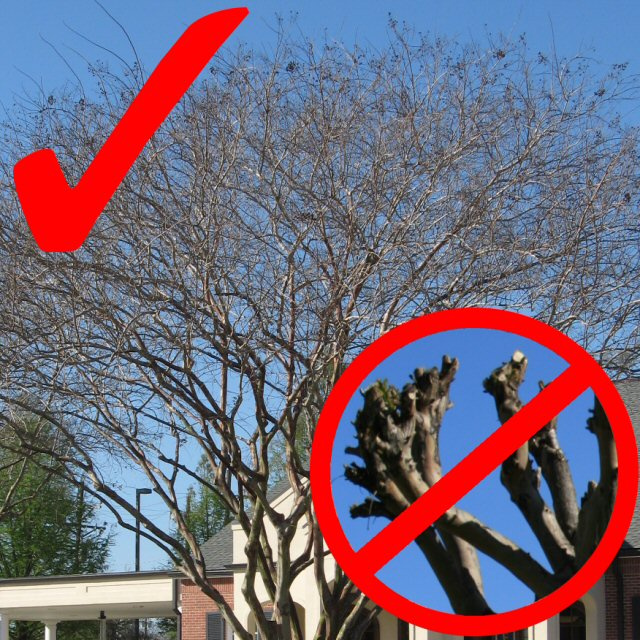Southeast Texas winters are known for being mild (our four seasons are Summer, Summer, Summer, and Christmas), but the dreaded cold snap is a yearly concern and rare is the winter that passes without at least one frost threatening our warm weather loving trees and shrubs. So this will be our second in a series covering the winterization and frost protection for plants and trees of Zones 8 and 9. This article we will focus on the frost protection and pruning of one of the South’s most beloved ornamentals, the care of crepe myrtle trees in winter.
Frost Protection of the Crepe Myrtle
Frost protection is very simple with the crepe myrtle. As hardy as it is beautiful, this acid-soil-loving, drought-hardy, sun-loving tree requires little care, but blooms even more beautifully each summer with proper attention in winter. Spreading a nice layer of mulch around the bottom of the crepe myrtle three or four inches deep will be sufficient to protect crepe myrtles even as far north as the Dallas area, which falls into Zone 7. The most important thing to do to protect your crepe myrtle from a cold snap is keeping it watered. Water strengthens and protects the root system of the crepe myrtle. With this little bit of effort, and giving your crepe myrtle its yearly pruning, should result in your crepe myrtle showing off a bevy of beautiful blooms next summer.
Properly Pruning Crepe Myrtle Trees
 It seems that everyone knows that crepe myrtle trees require pruning every year, and almost everyone knows that the time to do it is during the dormant period. Unfortunately, as it is evident all across Southeast Texas by seeing all the stunted crepe myrtle branches growing from knobby crepe myrtle trunks, the vast majority of crepe myrtle owners have been handed a lot of misinformation about what constitutes best pruning practices for the crepe myrtle. Without complicating the matter by sharing the wrong way of doing it, here is the right way in six short steps:
It seems that everyone knows that crepe myrtle trees require pruning every year, and almost everyone knows that the time to do it is during the dormant period. Unfortunately, as it is evident all across Southeast Texas by seeing all the stunted crepe myrtle branches growing from knobby crepe myrtle trunks, the vast majority of crepe myrtle owners have been handed a lot of misinformation about what constitutes best pruning practices for the crepe myrtle. Without complicating the matter by sharing the wrong way of doing it, here is the right way in six short steps:
1. Do your crepe myrtle pruning in late winter. Usually Late January to early February is ideal.
2. Remove the suckers. Suckers are the little branches that grew last season from odd places at the base of the trunk. These are often snapped off easily by hand, but pruners can do the trick too.
3. Measure up about four or five feet from the base of the tree. Any smaller branches growing below that line, from any of the main trunks, must go.
4. Select all the branches, also known as “leads,” that are growing toward the center of the tree or in odd directions. Remember that the objective is to encourage the growth of leads that spread outward to create that beautiful canopy of crepe-like flowers in summer. So keep the leads that lend their directional growing course to meet that objective, and thin out the rest.
5. To thin out the branches you have marked for removal, cut them at the point where they grow from the larger branch or trunk with a nice clean cut flush with the larger branch, without leaving a knobby stub.
6. There is a myth that one must remove all the seed heads to encourage better blooming next year. Never fear: your crepe myrtle will bloom nicely even if you leave the seed heads on the remaining leads. What is more important is that you do not “top off” your crepe myrtle. If you want to control the height of your crepe myrtle you may cut the leads back to the same height as the shorter leads at the height that you want to encourage.
And that is what you need to know about winterizing and pruning crepe myrtle trees the correct way. It will make for better blooming, and, in point of fact, a healthier tree to boot.














